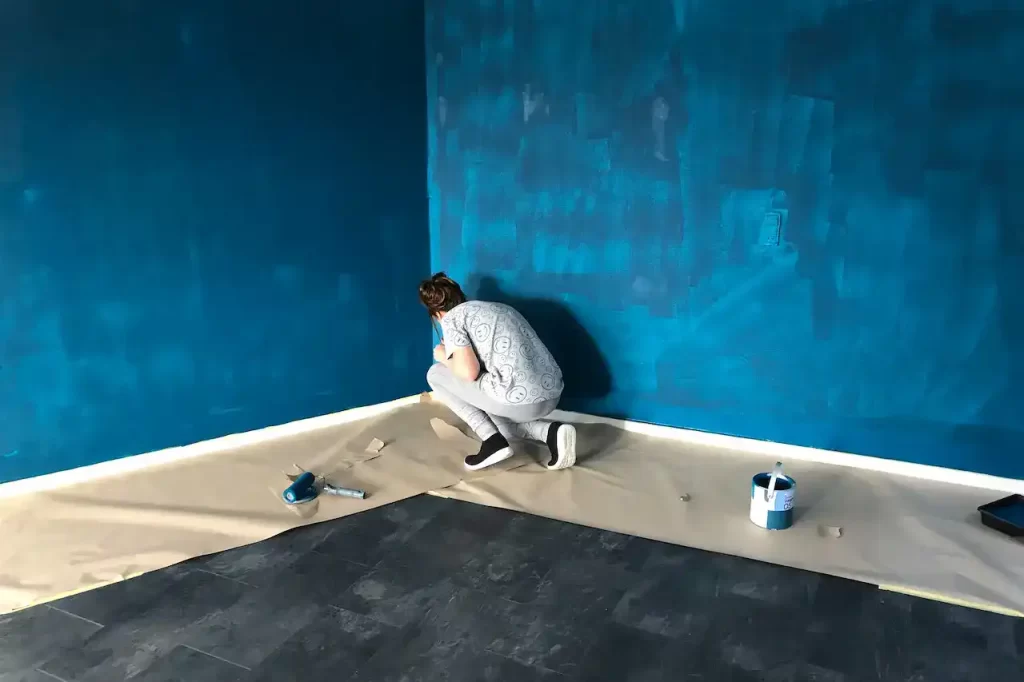Home renovation projects are exciting and can help you create the home of your dreams. However, without proper management, these projects can quickly become expensive and overwhelming. From unexpected costs to contractor mishaps, home renovations can quickly spiral out of control.
But fear not! There are many ways to save money on your renovation project without sacrificing quality. In this article, we’ll provide you with 10 smart ways to save money on your home renovation project.
First, we’ll discuss the importance of creating a budget and how to set a realistic one. Then, we’ll encourage you to prioritize your needs over wants to save money. We’ll also discuss how to shop for deals on materials and labor, and the benefits of doing certain aspects of the renovation project yourself.
We’ll also cover ways to reuse and repurpose existing materials, how to hire a reputable contractor, and how to time your renovation strategically. We’ll explore affordable material options and the importance of avoiding structural changes. Finally, we’ll emphasize the importance of not cutting corners to save money.
By following these tips, you can save money on your home renovation project while still achieving the results you desire.
Create A Budget
Creating a budget is one of the most important steps in any home renovation project. Without a budget, it’s easy to overspend and quickly find yourself in debt.
To create a budget, start by determining how much money you can realistically afford to spend on the project. This includes considering your income, savings, and any loans or financing options available to you.
Next, make a list of all the items you’ll need for the project, including materials, labor, permits, and any other associated costs. Be sure to research the average cost of each item, so you have a realistic estimate.
When setting your budget, be sure to factor in unexpected costs. It’s not uncommon for projects to encounter unexpected expenses such as repairs or additional labor, so it’s important to have some wiggle room in your budget.
To keep your budget on track, consider using budgeting tools or apps, and regularly track your expenses. Remember to be realistic with your budget and make adjustments as necessary. By creating a budget and sticking to it, you’ll be able to save money and still achieve your desired results in your home renovation project.
Prioritize Your Needs vs. Wants
When planning a home renovation project, it’s important to distinguish between your needs and wants. Needs are essential items required to improve the functionality or safety of your home, while wants are non-essential items that add aesthetic appeal or luxury.
To save money, it’s important to prioritize your needs over wants. Start by identifying the critical areas that need improvement, such as outdated plumbing or electrical systems, or areas that pose a safety hazard.
Once you’ve identified your needs, create a list of your wants. Determine which items you can afford and which items are less critical to the project’s success. Consider less expensive alternatives or delaying the purchase of non-essential items until a later date.
Remember to be flexible with your wants and focus on the most critical needs. Prioritizing your needs can help you save money and ensure that your renovation project improves your home’s functionality and safety.
Shop for Deals
Shopping around for the best deals on materials and labor is an excellent way to save money on your home renovation project. There are many ways to find deals, including seasonal sales, online marketplaces, and home improvement store clearance sections.
Start by researching prices and comparing them across different suppliers. Look for deals on high-quality materials and be sure to factor in shipping and handling costs. Online marketplaces like Amazon or eBay can offer competitive prices, while home improvement stores like Home Depot or Lowe’s often have clearance sections where you can find discounted items.
Take advantage of seasonal sales, such as Black Friday or Memorial Day, when retailers often offer discounts on appliances and materials. Additionally, consider buying in bulk, which can save you money on materials like paint or flooring.
When it comes to labor, it’s important to get multiple quotes from different contractors. Compare their prices and experience, and ask for references from previous clients. Don’t be afraid to negotiate and discuss ways to reduce costs, such as doing some of the work yourself or purchasing your own materials.
By shopping around for deals on materials and labor, you can save money and still achieve your desired results in your home renovation project.
Consider DIY
One way to save money on a home renovation project is to do certain aspects of the project yourself. However, it’s essential to consider the benefits and drawbacks of DIY and determine whether it’s the right choice for your specific project.
The benefits of DIY include saving money on labor costs and gaining a sense of pride and satisfaction in completing the project yourself. DIY can also give you greater control over the project and allow you to customize it to your specific needs.
However, the drawbacks of DIY include potential mistakes and errors that could lead to more significant expenses in the long run. Additionally, DIY requires time and effort, and certain aspects of the project may be outside of your skill level or require specialized tools.
Before attempting DIY, consider your skill level and available time. Be honest with yourself about your abilities and don’t attempt something that could be dangerous or cause more significant problems. It’s also important to research and gather the necessary tools and materials before starting the project.
By considering DIY, you can save money on labor costs and gain a sense of accomplishment in completing the project yourself. However, it’s essential to weigh the benefits and drawbacks and determine whether DIY is the right choice for your specific project.
Reuse and Repurpose
Reusing and repurposing existing materials is another way to save money on your home renovation project. Rather than buying new materials, consider using what you already have and giving it a fresh look.
For example, instead of replacing kitchen cabinets, consider repainting or refacing them to give them a new look. You can also reuse doors, windows, and flooring in other areas of your home or repurpose them for new uses.
Before starting your renovation project, assess the materials you already have and determine how they can be repurposed or reused. Consider refinishing furniture or repurposing old items into new decorative pieces.
Repurposing not only saves money, but it’s also an eco-friendly option that reduces waste and promotes sustainability. Additionally, repurposed items can add character and charm to your home and make it feel more unique.
By reusing and repurposing materials, you can save money and add a personal touch to your home renovation project. It’s important to get creative and think outside the box to find new uses for old items.
Hire a Reputable Contractor
Hiring a reputable contractor is essential to ensuring that your home renovation project is completed correctly and without unnecessary costs or mistakes. It’s important to thoroughly vet potential contractors before hiring them to ensure they have the necessary experience, qualifications, and reputation.
To find a reputable contractor, start by asking for recommendations from friends, family, or neighbors who have completed similar projects. You can also check online reviews and ratings on websites like Angie’s List, HomeAdvisor, or Yelp.
Once you have a list of potential contractors, schedule a consultation and ask for references from previous clients. Be sure to check those references and ask about their experience working with the contractor, the quality of their work, and whether the project was completed on time and within budget.
Additionally, ask the contractor about their licensing, insurance, and bonding, which protect you in the event of any accidents or issues during the project. A reputable contractor should be able to provide you with this information and answer any questions you may have.
By hiring a reputable contractor, you can ensure that your home renovation project is completed correctly and within your budget. Thoroughly vetting potential contractors and checking references can give you peace of mind and prevent unnecessary costs or mistakes.
Time Your Renovation
Timing your renovation project strategically can save you money and reduce stress during the process. One way to do this is to schedule the project during the off-season when contractors may be more willing to negotiate their rates.
For example, if you’re planning an outdoor renovation project, consider scheduling it during the fall or winter when contractors may have less work and be more willing to negotiate their rates.
Additionally, consider the timing of purchasing materials. You may be able to save money by purchasing materials during sales or when there are special promotions available.
Another benefit of strategic timing is that it can reduce stress during the renovation process. Scheduling the project during a time when you have fewer obligations or commitments can allow you to focus on the project and make sure it’s done correctly.
Before scheduling your renovation project, research the best time to complete the project based on your location and the scope of the project. Consider the availability of contractors and when you may be able to find the best deals on materials.
By timing your renovation project strategically, you can save money and reduce stress during the process. Additionally, you can ensure that the project is completed on time and within your budget.
Choose Affordable Materials
Choosing affordable materials is a great way to save money on your home renovation project. However, it’s important to make sure that the materials you choose still fit your desired aesthetic and are durable enough to last over time.
One option for affordable materials is laminate countertops, which can mimic the look of higher-end materials like marble or granite. Laminate is also easy to clean and maintain, making it a practical choice for kitchen or bathroom countertops.
Another option is vinyl flooring, which can mimic the look of hardwood or tile but at a lower cost. Vinyl is also easy to install and maintain, making it a great option for high-traffic areas of your home.
When choosing affordable materials, consider the long-term durability of the materials and how they will hold up over time. It’s also important to factor in the cost of installation and any maintenance or repairs that may be required down the line.
By choosing affordable materials, you can save money on your home renovation project without sacrificing style or quality. Look for materials that offer the best balance of affordability, durability, and aesthetic appeal to achieve your desired results within your budget.
Avoid Structural Changes
Structural changes can significantly increase the cost of a home renovation project. Moving load-bearing walls or adding an addition to your home requires extensive planning, permits, and materials, which can quickly add up in cost.
To save money on your renovation project, consider alternatives to structural changes. Instead of moving walls, consider rearranging your furniture to create a more functional space. Instead of adding an addition, consider repurposing an existing room or utilizing outdoor space with a patio or deck.
If you do need to make structural changes, consider hiring a structural engineer to help you assess the scope of the project and ensure that it’s done correctly. This can help you avoid costly mistakes down the line and ensure that the project is completed safely and up to code.
Before making any structural changes, it’s important to carefully consider your budget and the potential return on investment. While structural changes can improve the function and flow of your home, they may not always provide a significant return on investment when it comes time to sell.
By avoiding structural changes or considering alternatives, you can save money on your renovation project while still achieving your desired results. With careful planning and a focus on cost-effective solutions, you can create a beautiful and functional space within your budget.
Don’t Cut Corners
While it’s important to save money on your home renovation project, it’s equally important not to cut corners in the process. Cutting corners may seem like a quick and easy way to save money, but it can actually lead to expensive mistakes or repairs down the line.
For example, using cheap materials or rushing through the installation process can lead to issues like water damage, mold growth, or structural problems. These issues can be costly and time-consuming to repair, and may even require redoing the entire renovation project.
To avoid cutting corners, make sure that you’re using high-quality materials and hiring reputable contractors or professionals for any work that you’re not comfortable doing yourself. Take the time to properly plan and execute the project, and don’t rush through any steps in the process.
It’s also important to stick to your budget and avoid making changes or additions that weren’t part of the original plan. These changes can quickly add up in cost and may not provide a significant return on investment in the long run.
By taking the time to do the job right the first time, you can avoid costly mistakes or repairs down the line and ensure that your home renovation project is a success. Remember that quality should always come first, even when working within a tight budget.
Conclusion
In conclusion, renovating your home can be an exciting and rewarding experience, but it’s important to prioritize your needs and wants to create a budget-friendly project. By taking the time to carefully plan and execute the renovation, you can save money without sacrificing the quality or aesthetic of the final product.
Creating a budget, shopping for deals, considering DIY options, and reusing existing materials are just a few ways to save money on your renovation project. It’s also important to hire reputable contractors, choose affordable materials, time the renovation strategically, and avoid cutting corners to prevent costly mistakes or repairs down the line.
Remember to prioritize your needs over your wants when making decisions about the renovation, and consider alternatives to structural changes to save money. With careful planning and a focus on cost-effective solutions, you can create a beautiful and functional space within your budget.
So, take the time to assess your renovation needs and wants, create a realistic budget, and consider the tips and strategies outlined in this article. By prioritizing your renovation goals and sticking to your budget, you can create the home of your dreams without breaking the bank.





